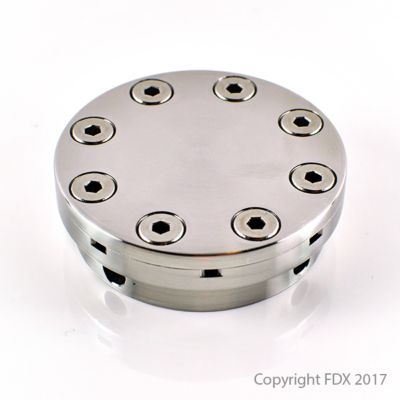-
-
Kostenlose Software für Studierende
Ansys unterstützt die nächste Generation von Ingenieur*innen
Studenten erhalten kostenlosen Zugang zu erstklassiger Simulationssoftware.
-
Verbinden Sie sich jetzt mit Ansys!
Gestalten Sie Ihre Zukunft
Stellen Sie eine Verbindung mit Ansys her, um zu erfahren, wie Simulation Ihren nächsten Durchbruch vorantreiben kann.
Länder und Regionen
Kostenlose Demoversionen
Produkte & Dienstleistungen
Lernportal
Über das Unternehmen
Back
Produkte & Dienstleistungen
Back
Lernportal
Ansys unterstützt die nächste Generation von Ingenieur*innen
Studenten erhalten kostenlosen Zugang zu erstklassiger Simulationssoftware.
Back
Über das Unternehmen
Gestalten Sie Ihre Zukunft
Stellen Sie eine Verbindung mit Ansys her, um zu erfahren, wie Simulation Ihren nächsten Durchbruch vorantreiben kann.
Kostenlose Demoversionen
ANSYS BLOG
November 5, 2018
How to Make an Oscillating Nozzle Spray Without Moving Parts
Few things are as mesmerizing as an oscillating spray. However, these beautiful fluid flows are more than just eye candy. Oscillating nozzles play an important role in manufacturing, cleaning and engine design.
The nozzles designed by FDX oscillate fluid jets without any moving parts.
Traditionally, this movement is created mechanically.
However, Fluid Dynamix (FDX) — a member of the Ansys Startup Program — uses clever tricks to produce nozzles that oscillate jets without any moving parts.
FDX optimizes designs for various industries from manufacturing to heating, ventilation and air conditioning (HVAC).
These industries rely on oscillating fluid flows because they are better at cleaning, mixing, cooling and distributing particles than a stable jet of the same flow rate.
“If you want to water your lawn what’s the first thing you do?” asks Oliver Krüger, CTO of FDX. “You start moving your hand to spray the water around. Oscillating nozzles do this naturally and can be customized to a given process.”
Krüger notes the challenges of this customization process. For instance, when FDX changes one parameter in the nozzle’s geometry it can have unexpected effects as the system is non-linear.
This is why FDX uses Ansys CFX computational fluid dynamics (CFD) to ensure each nozzle’s design.
How Oscillating Nozzle Sprays Work
Oscillating nozzle sprays make clever use of the Coanda effect. This is the phenomenon where a jet of fluid attaches to a surface and sticks to it.
The jet oscillates because recycled fluid pushes it. The jet then
attaches to another wall of the nozzle’s chamber.
Even if the surface curves away from the original direction of the jet, the fluid will follow along the curvature of the surface.
This effect is why people often get splashed when washing a spoon in a sink.
The internal geometry of the nozzle is made up of three openings for the jet to pass through. The first opening creates the water jet.
The second opening curves the jet to one side of the nozzle’s main chamber via the Coanda effect. The third opening releases most of the jet out of the nozzle. Meanwhile, the rest of the fluid is recycled to the opening of the main chamber.
This small amount of recycled fluid is enough to push the jet to the opposite side of the nozzle’s main chamber. Once again, the Coanda effect holds on to the jet, just on the opposite side of the chamber.
When more fluid is recycled back, it once again pushes the jet. Only this time, the jet is returned to the side of the chamber it started on.
The process repeats until the flow is terminated.
This continuous use of the Coanda effect and the fluid recycle forces the jet to oscillate. The characteristics of this oscillation are dependent on numerous parameters that govern the initial fluid flow and the nozzle’s geometry.
Optimizing Oscillating Nozzle Sprays with CFD
CFD simulations help FDX control the nozzle’s flow characteristics.
FDX uses these simulations to customize a nozzle’s frequency, spray angle, flow rate, droplet/jet size and pressure loss based on a customer’s needs.
“We have a database of simulation results which helps us find a nozzle the customer needs,” says Krüger.
“We have also automated the Ansys Platform to run parametrization studies of our nozzles. This is done when the customer requires a jet that doesn’t match any of the nozzles in our database.”
This nozzle from FDX creates multiple oscillating sprays.
Once FDX finds an ideal nozzle geometry to meet a customer’s needs, a prototype is built and tested. From there FDX enlists a service company to build the nozzles. FDX also licenses the design to any customer wishing to build the nozzles.
There are 19 parameters that govern the geometry and initial conditions of FDX’s simulation. This is a very complex non-linear system. By automating the simulation and post-processing, FDX can work on more than one project simultaneously.
If you are a startup looking to set up your own automated simulation workflow, check out the Ansys Startup Program.
